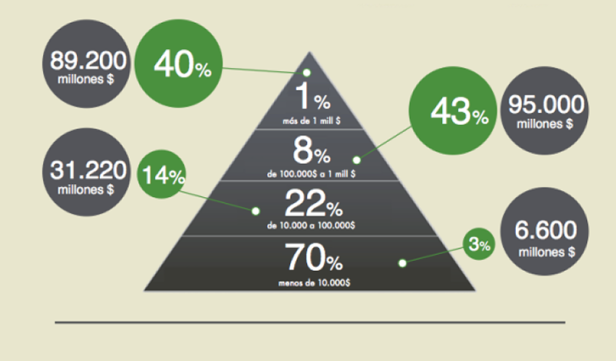Economic and social model 02
Our economy, the one we live in, is impregnated with the ideology of our time. It is marked and defined by the use of money as an end and accumulation, by faith in continued growth (growth in the value of GDP) as a synonym of well-being and by the use of markets as a tool for allocation and exchange. However, we have seen how this economy and the model that sustains it generate strong inequalities, great turbulence and systemic crises.
The way we produce exploits Nature and people, especially women, and plunders the natural resources of other territories, generating great inequality and social injustice. It also makes use of material and energy resources that ignores their finite nature. The ecological and social crisis in which we are immersed is, therefore, a direct consequence of the way in which it is produced (and consumed) within the capitalist economic system, and this way responds to the logic of a globalized, patriarchal and colonial market. .
The environmental consequence of this form of production (and consumption) is an overexploited and degraded Nature to such an extent that today, the scientific community has called this era in which we live “Anthropocene”: a geological era where the most significant changes in the Earth system have been produced by human activities typical of our industrial civilization.
In recent decades, human activity has exceeded the biocapacity of the Earth, is causing the loss of biodiversity at an accelerated pace, altering the dynamic processes of the biosphere, while at the same time deepening human inequalities in all axes of domination. Those who hold economic and political power, and to a large extent the social majorities that support them, are not aware that our species depends on these natural resources, nor that human life is maintained thanks to biophysical and geophysical conditions. that they are altering They ignore what is essential to sustain life. We inhabit a finite planet, with increasingly scarce resources, therefore unlimited growth is neither real nor possible.
The laxer regulations of the production system not only threaten Nature, but also against the daily life of people, since they allow greater lack of protection and make use of the absence of minimum labor rights that guarantee job security and quality of work. life. Workdays of more than 12 hours with hardly any breaks, very questionable health conditions and miserable wages are some of the characteristics of this production model in many States.
Beyond these extreme situations, there are many other equally unfair and widespread situations in today’s labor market: exhausting hours, difficulty reconciling work and personal life, inequalities in wages based on gender and age, low wages and poor labor rights, unemployment and precariousness and job insecurity… and a long list of social consequences resulting from a model that does not look out for the well-being of the people involved but for the profit and maximum benefit of a few.
These logics that are hidden behind the capitalist production model take shape, likewise, in the business model that executes it. The appearance of multinational companies throughout the last century meant an important productive change, where not only production is produced for international markets, but also production itself is organized based on that global village, outsourcing the various production phases to those countries where it is most surplus value can be obtained. It is also a monopolistic system whose influence and low prices (at the cost of labor and environmental exploitation) have destroyed the productive fabric of many places, generating enormous productive dependency and preventing the economic development of numerous territories.

Global wealth pyramid. (Source: The Country)
Based on this categorization, it is established that the systemic and social crisis that is devastating the world is the responsibility of the predatory model of the Global North, a scarce 20% of the world population, whose negative impacts punish the remaining 80% more severely. The excessive economic model of the Global North not only extracts resources (manpower included) from the countries of the Global South, but also leaves them waste, waste, contamination and other consequences of their production process. In parallel, the borders are closed to those people who seek a better life, fleeing their countries of origin devastated by war, violations of fundamental rights, extreme poverty…, largely due precisely to this model of plunder and domination of the Global North, where women and girls are once again
This situation is aggravated by the effects of climate change, which, although present throughout the planet, have a greater impact on those populations that have fewer resources to deal with it.
